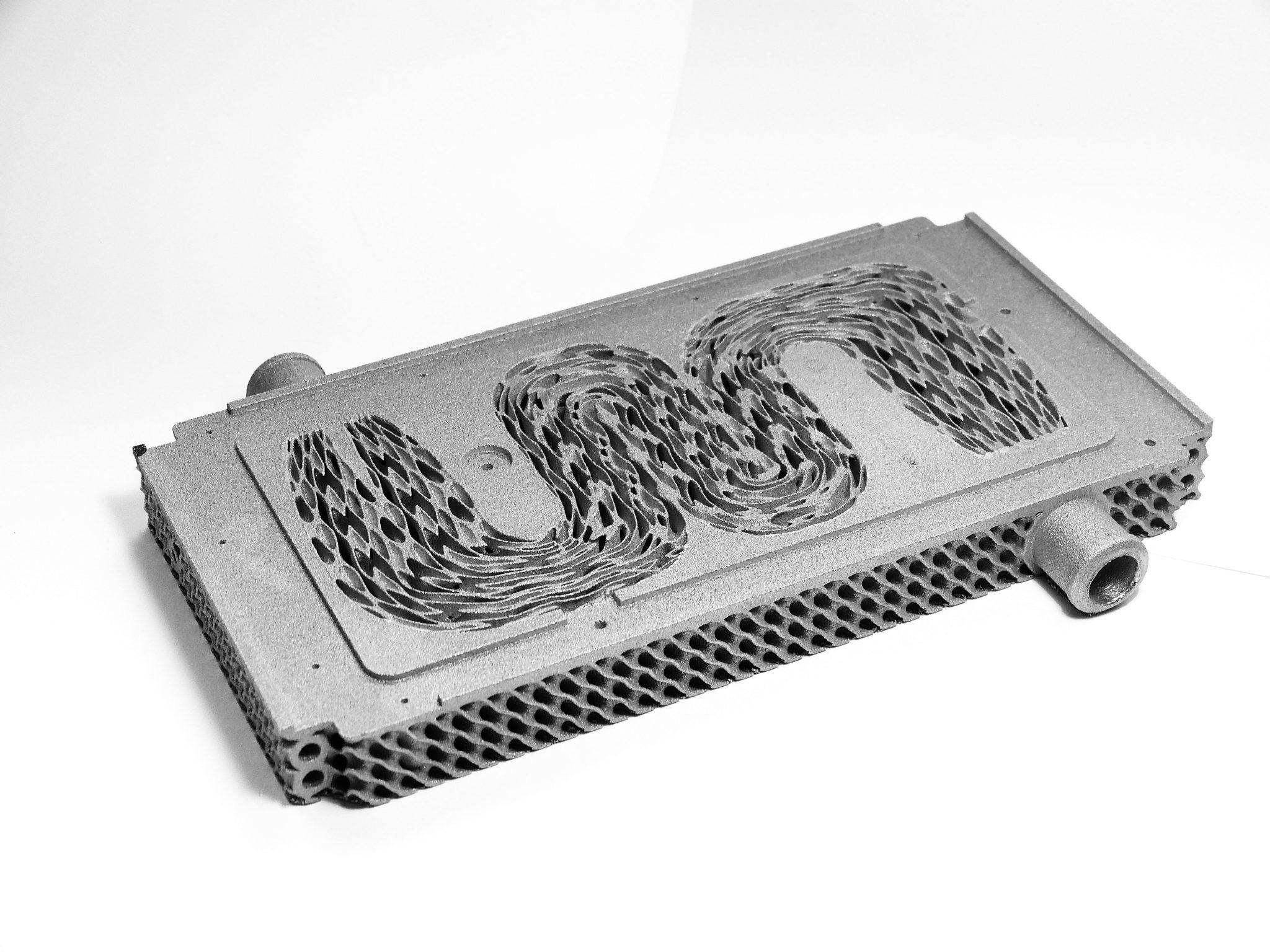Liquid-cooled cold plate for automotive power electronics
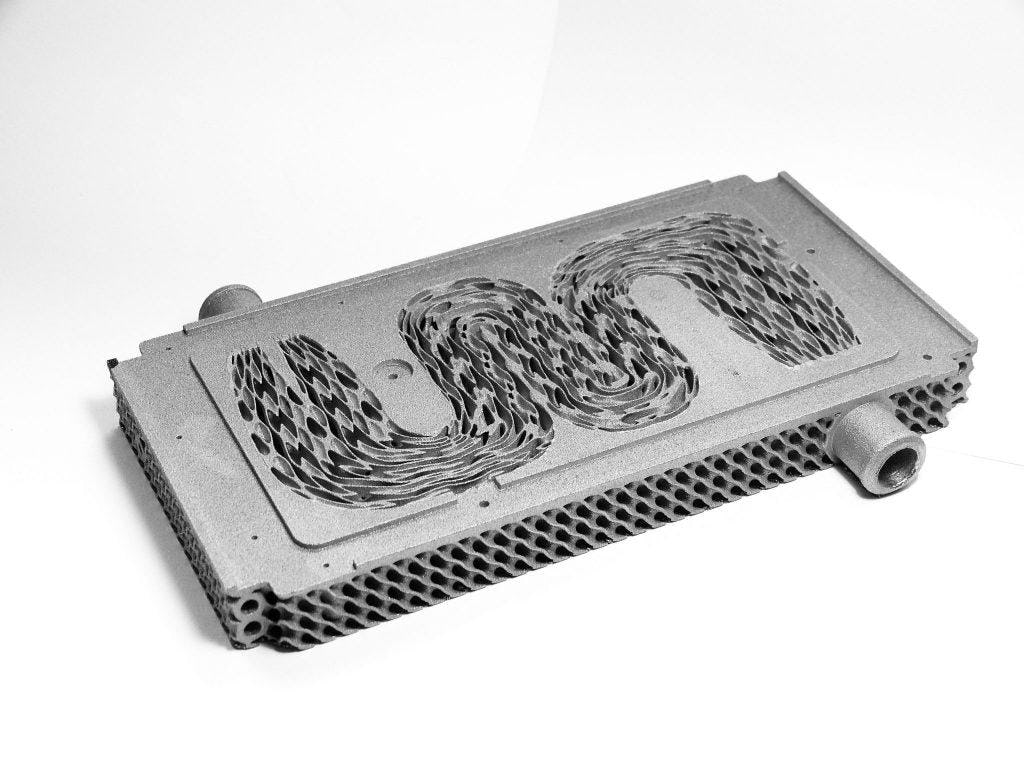
Applications
Key Software Capabilities
- Lattice structures
- Integrations
Summary
Puntozero used nTop to redesign the power electronics in Dynamis PRC’s electric race car for additive manufacturing. The result was a 25% lighter liquid-cooled heat sink with flow guides that increased the heat transfer surface area by 300%.

About: Puntozero is an innovative product development agency specializing in design for additive manufacturing.
- Industry: Automotive
- Size: 1-25 employees
- Location: Milano, Italy
- Product: Liquid-cooled cold plate for automotive power electronics with shark-inspired flow guides
The project
Create a lighter, more efficient cooling system for a new electric race car
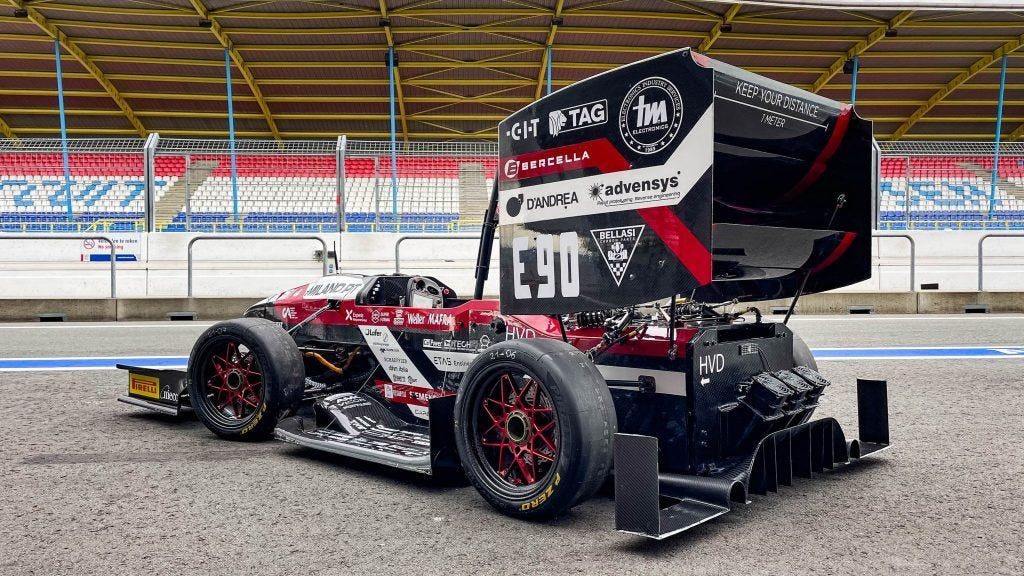
The Formula SAE Electric race car created by Dynamis PRC
In 2021, the Dynamis PRC team competed in the electric vehicle category of the Formula SAE Electric competition for the first time with a brand new race car. Dynamis partnered with Puntozero to develop a lightweight and more efficient cooling system for their high-voltage traction inverter to ensure it could withstand race track conditions. M4P then additively manufactured the heat exchanger prototype in commercially pure aluminum.
The challenge
Designing a high-efficiency cold plate
The IGBT controllers of the high-voltage traction inverter must stay within their optimal operating temperature range. However, the conventional liquid-cooling systems of traction inverters are heavy and bulky, making them nonideal for high-performance racing applications.
The challenge was to design a high-efficiency cold plate that is lighter and more compact than the conventional component.
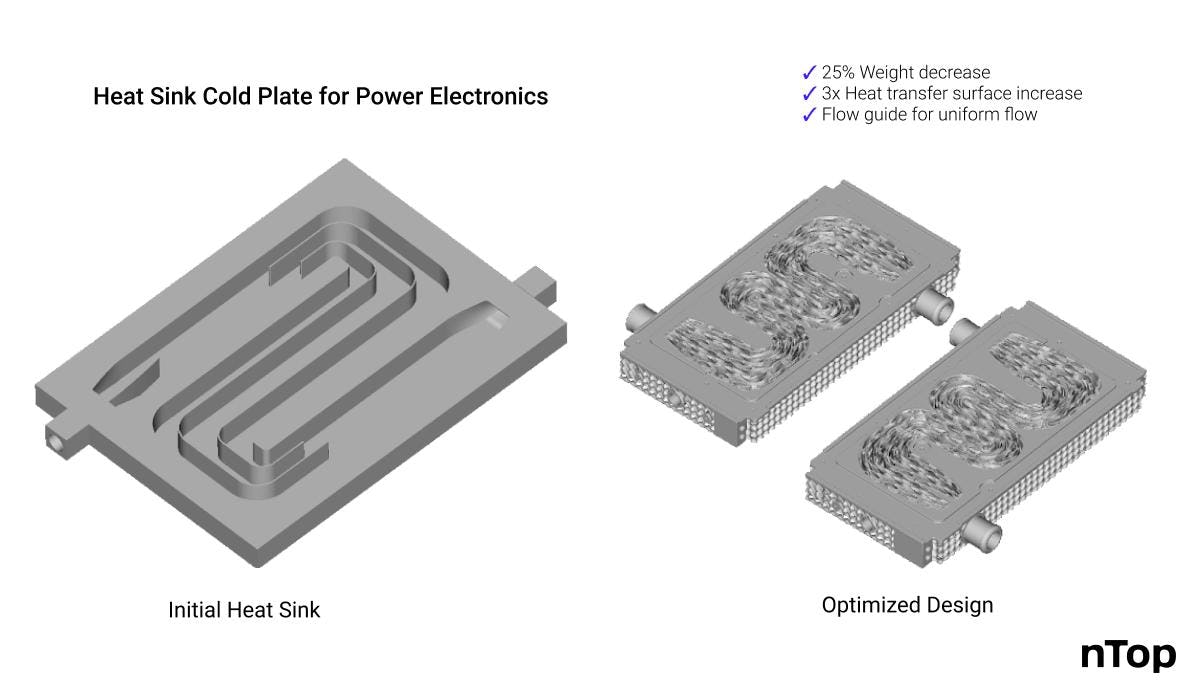
The final cold plate heat exchanger design is lighter and modular.
The solution
Gyroid structures to guide the flow
The engineers of Puntozero generated a directional lamellar geometry in nTop that conforms to the duct of the cold plate and stirs the flow around the channel corners. The flow guides are based on a gyroid lattice that was warped using advanced Field-Driven Design techniques.
The results
3x
increased surface area for heat transfer
25%
reduced weight
High accuracy
with < 200 microns deviation
Why nTop?
The power and flexibility of nTop enabled Puntozero to manage the complexity of the DfAM process and take advantage of additive manufacturing so they could apply it to the cold plate design. The result was flow guides that increase the heat transfer surface by 300% and eliminate turbulent flow along the curves while simultaneously reducing the overall weight of the system by 25%.
Field-Driven Design
Puntozero engineers created a two-body field using nTop’s unique Field-Driven Design feature. They then warped a gyroid lattice along the X and Y directions to guide the flow around the bends. Finally, they thickened the structure and united it with the external cell. This gyroid structure is perfect for heat transfer because it creates a lightweight self-supporting structure with a high surface area to volume ratio.
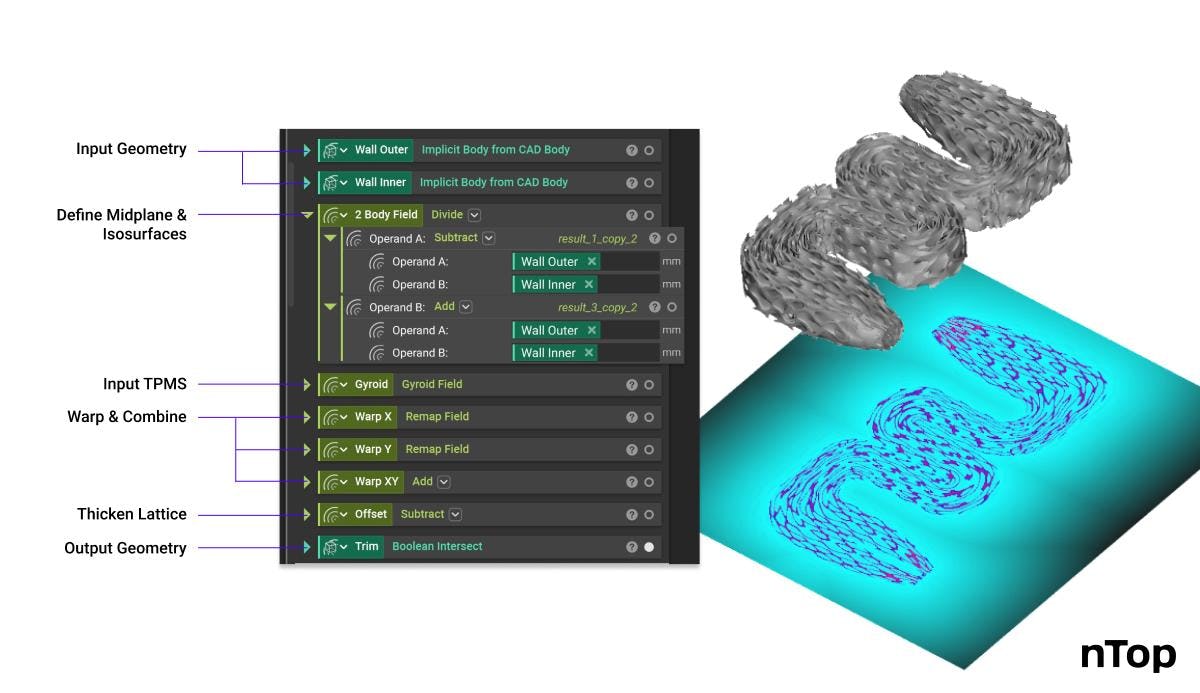
The internal lattice is based on a gyroid structure that was warped using Field-Driven Design techniques.
Lightweighting
For the main structure of the heatsink, Puntozero chose a diamond TPMS lattice structure. The external lattice reduced the weight and production cost of the component while maintaining the necessary stiffness, improving its manufacturability, and increasing the contact surface area with the power electronics to promote heat transfer.
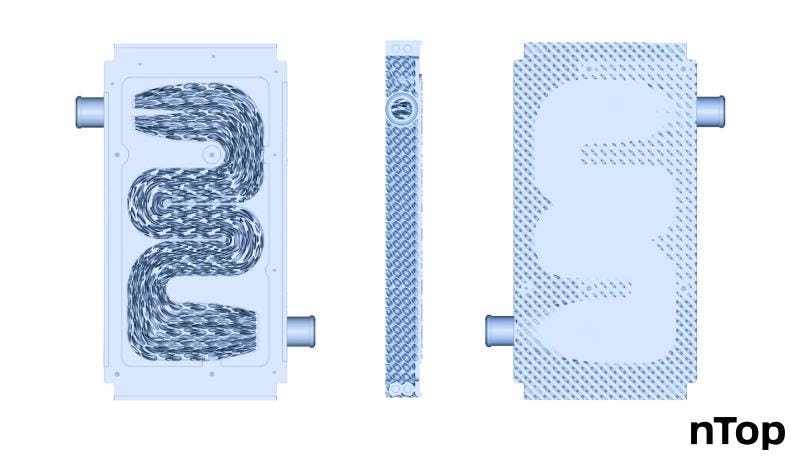
The external lattice is progressively thicker near the contact surface to promote heat transfer.
Rapid iteration
nTop’s rapid iteration capabilities allowed Puntozero’s engineers to quickly target the main opportunities for optimization and, after multiple rapid design iteration cycles, develop a final cold plate heat sink design that could hold up to race track conditions.
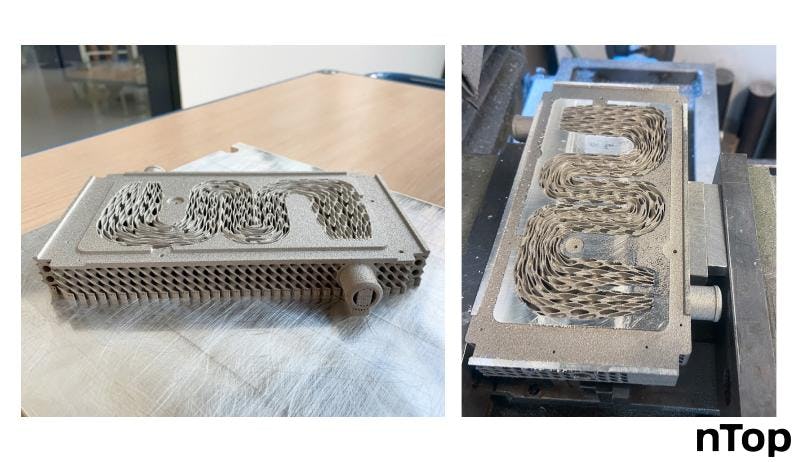
Photographs of the manufactured component after depowdering (left ) and during machining (right).
Integrations
Following a CT scan using computational tomography, the Puntozero team easily integrated their nTop files for manufacture on an EOS M 290 system.
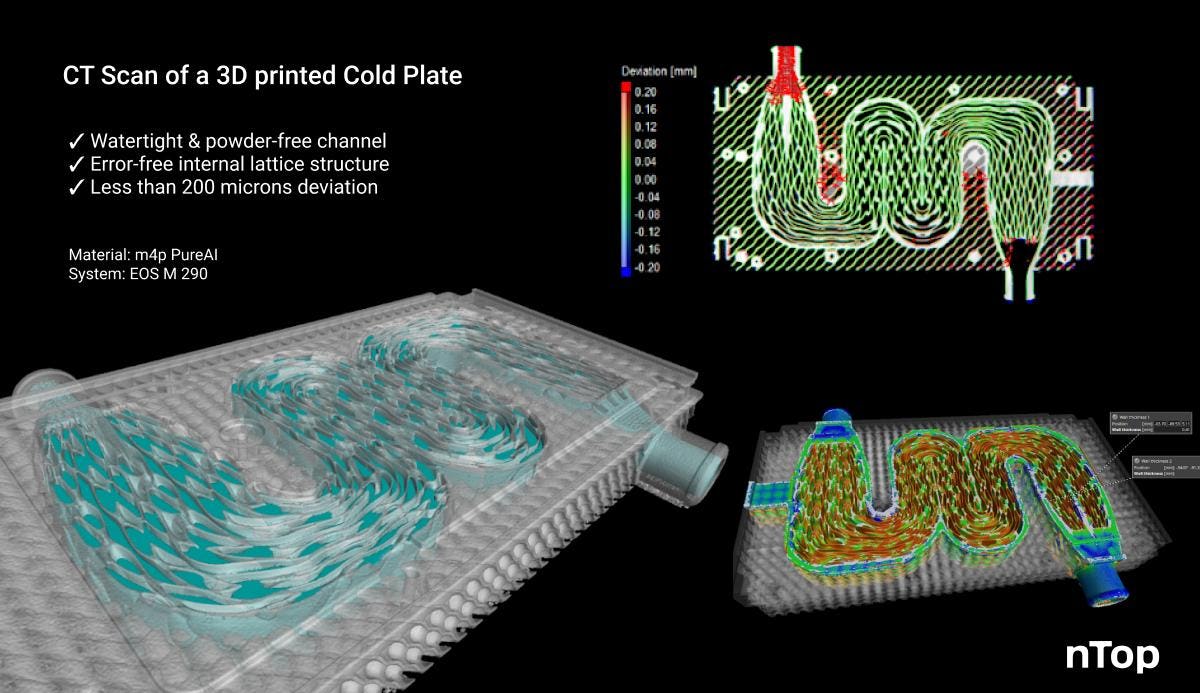
The CT scan showed that this complex part was manufactured within specification and without imperfections.
Conclusion
The Puntozero team developed a high-performance heat exchanger that could handle high-pressure race track conditions by taking advantage of additive manufacturing technologies and nTop’s advanced engineering software.
Related content
- WEBINAR
Eliminate Manual Meshing for Faster Heat Exchanger Simulation

- WEBINAR
Modernizing Aerospace Engineering in the Physics AI Era

- VIDEO
When your design changes, how fast can you respond?

- CASE STUDY
Replacing spacecraft supermaterial with high-performance lattice

- VIDEO
Creating a computational design workflow to lightweight drone panels with nTop’s new ribbing tools

